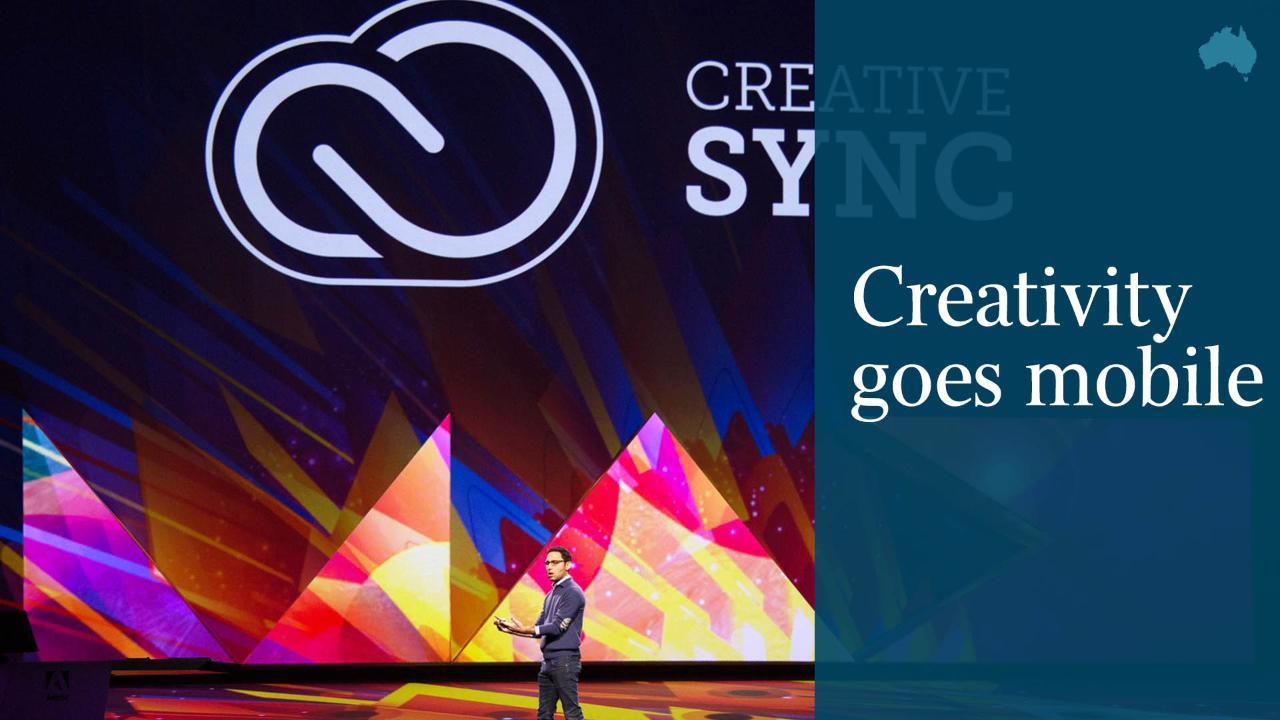Adobe could target photobombs in upcoming features
Adobe has taken the wraps off upcoming projects, which include an app that targets photobombs in images.

Adobe has taken the wraps off upcoming projects, which include an app that targets photobombs in images, and another that creates 3D portraits from 2D images.
The futuristic apps were presented as part of Adobe Sneaks, an event where the firm shows off early, unpublished versions of apps that are under development, that may or may not make it into full production.
Adobe this week is conducting its three-day annual MAX event in Los Angeles. It uses MAX to unveil new apps and software updates. Seven-thousand people are attending Adobe MAX this year and as well as attending keynotes, attend classes to hone their skills.
Speakers at a keynote yesterday included Australian film director Baz Luhrmann, and Brendan Stanton, a former bond trader who, after losing his job, set up Humans of New York, a photoblog where he tells the stories of everyday people on the street. His Facebook page now has more than 15 million followers.
As well as the trend to mobile apps, Adobe is introducing more vector based graphic manipulations. One of its new apps, Fuse, lets a user design an avatar from the skin up, choosing hair styling and clothing, and manipulate facial features. If you want to use your own face or that of friends and family, you need to go to a third party service such as 3d-avator-store.com which will create an avatar you can import into Fuse.
But at the sneaks event, Adobe revealed a project that, if implemented, will soon see users creating avatars straight from photos. There will be no need to use a camera and render the image into a full 3D model that can be printed or used as an avatar.
In the long run, these avatars will be of value not only for gaming and 3D character animation, such as that rolled out in Adobe Animate, but also for creating 3D vector based posters and graphics, using around 10,000 animations coming to Photoshop from Adobe’s acquisition of San Francisco 3D graphics specialist firm Mixamo.
At the Sneaks event, Adobe also revealed Project Louper, a visual search engine that searches online for images that match nominated images. Specifying, say, an image of a lion, and you get other lion images that look similar. Specifying two images, say a circle and a Lion in the search, and the visual search will display images with characteristics of both.
The Photobombs app identifies photobombs in images and lets you reduce or diffuse their effect.
Another upcoming app, called “Deep Font”. lets a user capture and replicate a font they might see on a web page. Another font-related app called “Project Faces” has a series of sliders for adjusting aspects of a chosen font such as crossbars, contrast, thickness and curvature.
A feature called “Extract Shading” will remove objects and letters above a textured background and leave that background intact. You do this with the clone stamp, but the new feature makes the job simpler.
At MAX this year, Adobe also unveiled “Project Comet”, a design tool for artists and designers building screens for mobile apps. Being vector-based, it is capable of automatically scaling up designs for a smartphone app so that layouts suite a tablet and web page as well.
It has standard app screen designs that users can fill with their own artwork, photos and text, and an ability to duplicate art elements. Users can create working prototypes of their apps.
Adobe is rolling out new features for its DPS (digital publishing solution) that will allow app developers to dynamically update app content any time after roll out.
Until now, apps developed through Adobe and made available through the Apple or Android app stores contained static content. Apps had to be updated through the app store to display new content.
With this year’s updates, developers can push new content to existing apps at any time.
“We had an application in the past called PhoneGap that was built just for that — to allow mobile customers to create mobile applications from scratch so we’ve been experimenting with applications,” said Mala Sharma, Adobe vice-president Creative Cloud business & marketing, said.
Ms Sharma, who was the driving force behind Adobe’s adoption of the Creative Cloud subscription model three years ago, said the company had received $US2.5bn revenue this year, and more than 20 per cent of customers were new to Creative Cloud in the past year.
About 40 per cent of Creative Cloud growth was now outside the US and there had been a big adoption of mobile. More than 14 million Adobe IDs had been first created on mobile.
Chris Griffith is attending Adobe MAX in Los Angeles courtesy of Adobe.


